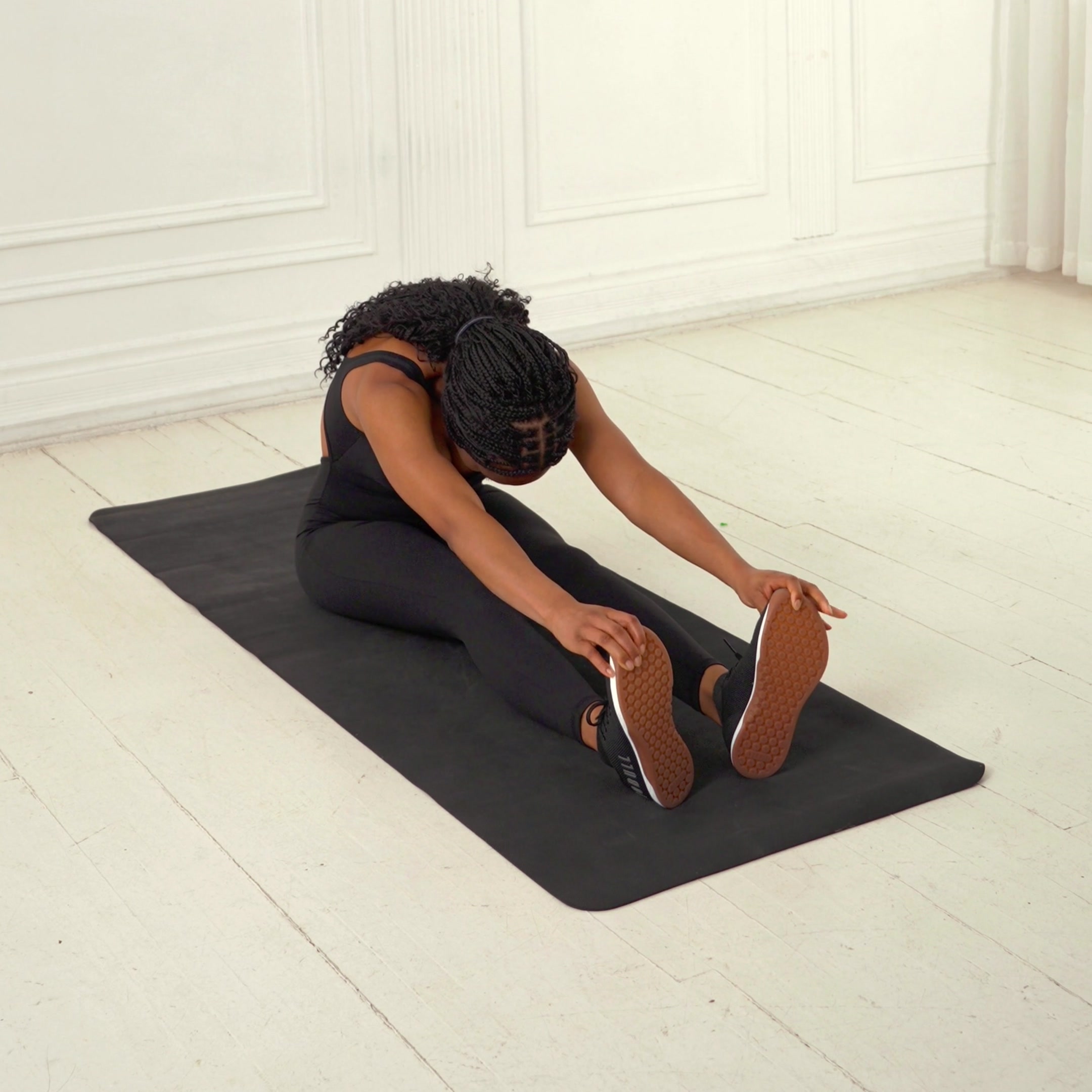Standing Toe Touch
A bodyweight forward bend stretch that targets hamstrings, lower back, and calves to improve flexibility and mobility; commonly used in warm-ups and cool-downs.
About Exercise
Equipment
Body Weight
Difficulty
1/5 • Beginner
Primary Muscle Groups
Hamstrings
Secondary Muscles
Calves, Abs
Popularity Score
8
Goals
Training Style
Setup Requirements
Requires Rack
No
Requires Bench
No
Requires Spotter
No
Space Needed
Small
Noise Level
Low
Muscle Breakdown
View Muscle MapHamstrings
9/10Biceps Femoris, Semitendinosus, Semimembranosus
Lower Back
7/10Erector Spinae
Glutes
6/10Glute Max
Calves
5/10Gastrocnemius, Soleus
Abs
3/10Rectus Abdominis
Programming
Typical Rep Range
1-3 reps
Rest Between Sets
30-60 seconds • Between holds
How to Perform
Stand with feet hip-width apart, knees straight but not locked, arms relaxed at sides, shoulders back and down.
- Inhale to prepare.
- Exhale and hinge forward at hips, keeping back flat.
- Let arms hang or reach toward toes without straining.
- Hold position while breathing deeply.
- Inhale and slowly return to standing by peeling spine up segmentally.
Coaching Tips
Form Cues
- Hinge from hips
- Keep back flat
- Engage core
- Breathe steadily
- Avoid bouncing
Breathing
Inhale to prepare and return, exhale to hinge forward and deepen the stretch; brace core lightly.
Tempo
4-0-4
Range of Motion
Hinge from hips until hands reach shins, ankles, or toes, or as far as flexibility allows without excessive back rounding; thighs parallel to floor if needed.
Safety
Safety Notes
- Avoid if acute low back pain or disc issues
- Consult provider for hamstring injuries or osteoporosis
- Do not bounce to prevent strains
- Keep knees slightly bent if tight
- Pregnant individuals consult professional
Spotting
No spotting needed; self-monitor form.
Common Mistakes
- Rounding lower back
- Bouncing into stretch
- Locking knees
- Forcing beyond comfort
- Neglecting core engagement
When to Avoid
- Acute low back pain
- Hamstring injuries
- Disc issues
- Osteoporosis
- Glaucoma
- High blood pressure
Flexibility Needed
- Hip flexion range
- Hamstring flexibility
- Spinal flexion control
Build Up First
- Basic standing posture awareness
Also known as
Forward Bend Stretch, Standing Forward Fold
Found this helpful?
Share your thoughts or help us improve this guide.
Similar Exercises

Seated Toe Touches
Bodyweight
Hamstrings

Toe Touches

Bodyweight
Abs
Balance Trainer Toe Touch
Balance Trainer
Hamstrings
Walking Single-Leg Toe Touch
Bodyweight
Hamstrings

Push-Up with Toe Touch
Bodyweight
Chest

Touchdown Jacks
Bodyweight
Glutes

Wide-Legged Standing Forward Bend
Bodyweight
Hamstrings

Bodyweight Standing Hamstring Curl
Bodyweight
Hamstrings

Standing Single-Leg Hamstring Stretch
Bodyweight
Hamstrings

Kettlebell Windmill with Opposite Toe Touch
Kettlebell
Obliques


subscribe to our newsletter
Contact Us
hello@trainfitness.aiFind Us
130 Spadina Avenue, Toronto,
Ontario, M5V 0H4, Canada
©2025 All Rights Reserved
